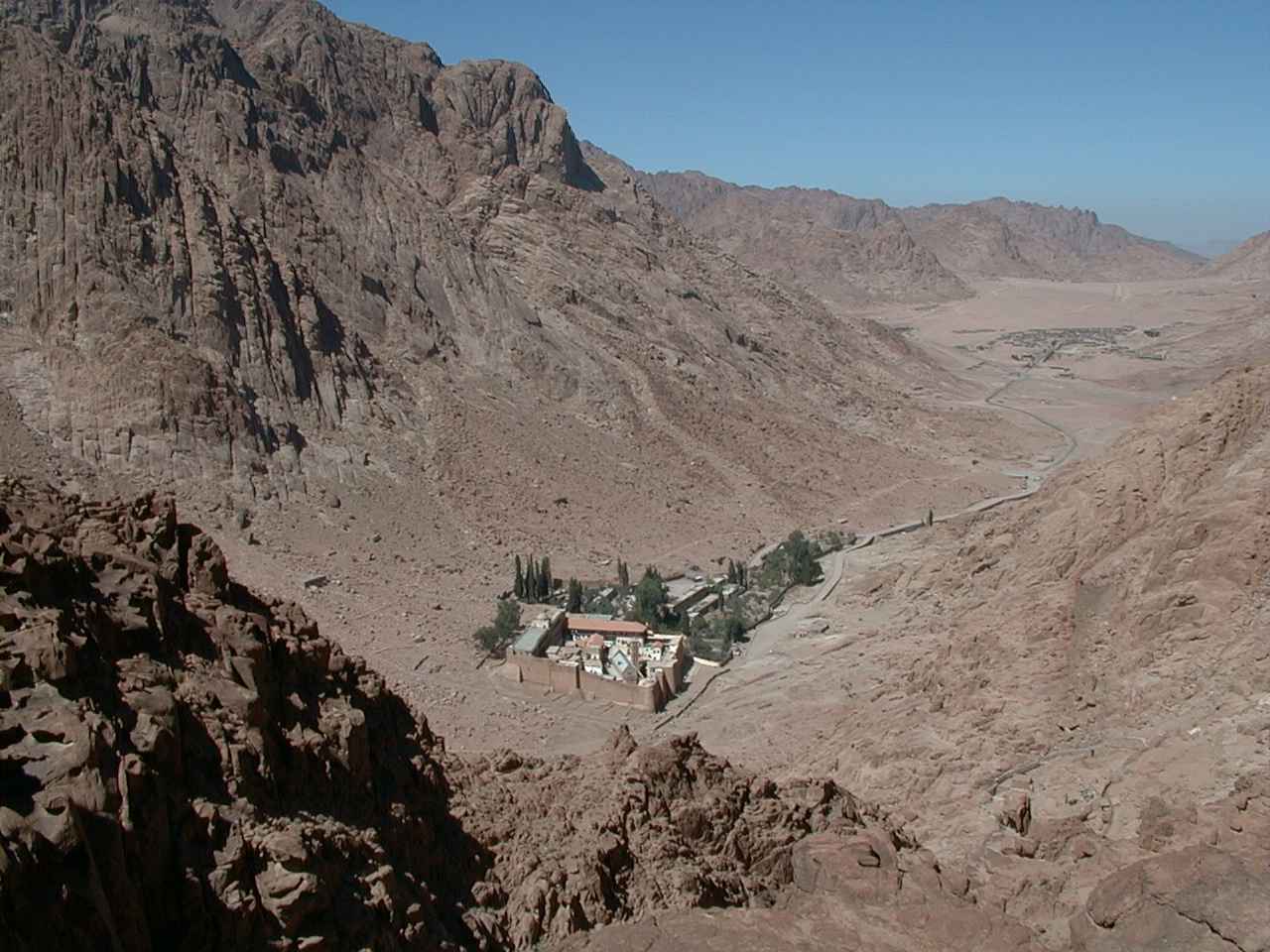
The South Sinai mountain complex, with its granite mountains and arid landscape, consists also of narrow valleys and small oases that are of great religious and historical significance. These sites are associated with the forty year sojourn of the Children of Israel, and with the ascetic struggles of the hermits of Sinai, from the dawn of the monastic movement, to more recent years. The Holy Monastery of Sinai is located at the foot of Mount Horeb, the Mount of the Decalogue. The valley opposite the monastery is the traditional site where the Children of Israel camped. The modern village of Katrine is located here today.
The monastery complex built around the site of the Burning Bush and the Well of Jethro developed across the centuries. The monastery catholicon is surrounded by nine chapels and a bell tower. There are a further twelve chapels within the monastery complex. Adjacent to the Tower of Saint Helen is the residence of the Archbishop and the Chapel of the Life-giving Spring. To the west are accommodations for pilgrims, and to the north are administrative offices. To the east are the old bakery and the refectory, and a range of cells. The south wing, completed in 1951, houses the library, the icon storage room, a seminar room, and other workshops and cells.
To the west of the fortress of Justinian lie the monastery garden, the cemetery, the ossuary, and other supporting structures. From here, the path begins that leads pilgrims to the peak of Mount Sinai, as well as to the peak of Mount Saint Catherine, and the hermitage of Saints Galakteon and Episteme. The area also contains numerous chapels, gardens, and hermitages.




